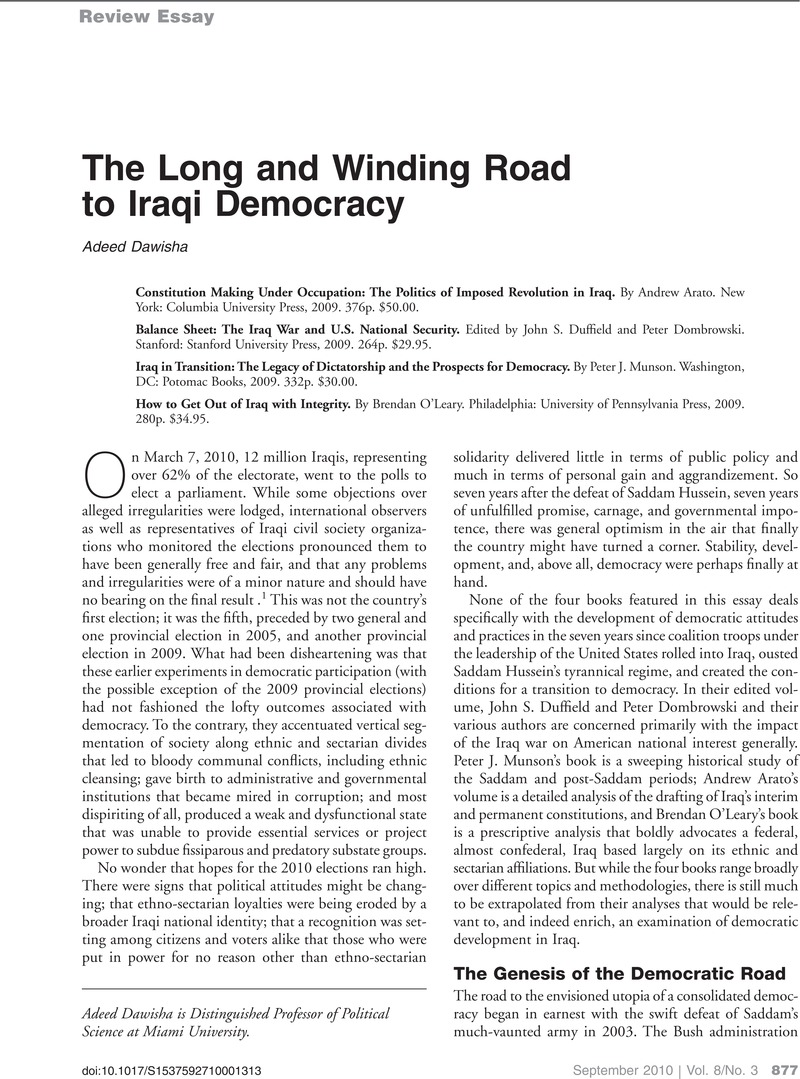Crossref Citations
This article has been cited by the following publications. This list is generated based on data provided by Crossref.
Howard, Lise Morjé
2015.
US Foreign Policy Habits in Ethnic Conflict.
International Studies Quarterly,
p.
n/a.
Bogaards, Matthijs
2021.
Iraq’s Constitution of 2005: The Case Against Consociationalism ‘Light’.
Ethnopolitics,
Vol. 20,
Issue. 2,
p.
186.





